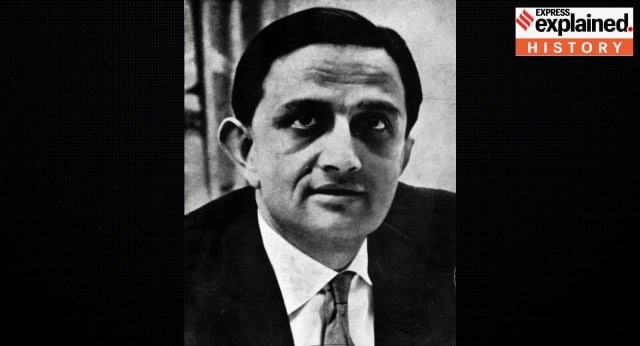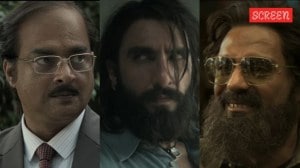Vikram Sarabhai’s 52nd death anniversary: How he shaped India’s scientific landscape
Here is a look at the life and achievements of Sarabhai, who late President APJ Abdul Kalam once had called the 'Mahatma Gandhi of Indian Science'
 After studying from Gujarat University in Ahmedabad, Sarabhai went to study physics and mathematics at Cambridge University, with a reference from Rabindranath Tagore. (Express archives photo)
After studying from Gujarat University in Ahmedabad, Sarabhai went to study physics and mathematics at Cambridge University, with a reference from Rabindranath Tagore. (Express archives photo)Vikram Sarabhai, the father of India’s space programme, died on December 30, 1971, in Kovalam, Kerala, at the age of 52. During his lifetime, Sarabhai had 38 institutions that are now leaders in space research, physics, management, and performing arts. Almost all of India’s space scientists who came after him owe a debt of knowledge, leadership, and gratitude to him.
Here is a look at the life and achievements of Sarabhai, who late President APJ Abdul Kalam once had called the “Mahatma Gandhi of Indian Science”.
Committed to freedom of thinking
Born to Ambalal and Sarla Devi, Ahmedabad’s leading textile-mill owners, Sarabhai showed creative promise early. He was 15 when he built a working model of a train engine with the help of two engineers, which is now housed at the Community Science Centre (CSC) in Ahmedabad. The CSC was Sarabhai’s way of providing other children the privileges he had, of experimental research.
“He was essentially a researcher, and believed that people, especially children, should be allowed to think freely and come up with solutions on their own,” Sarabhai’s son Kartikeya, who founded the Centre for Environment Education in 1984, had told The Indian Express earlier.
Sarabhai’s daughter and Indian classical dancer Mallika recalled how, as children, they were at the centre of every family decision. This freedom helped “garner convictions early in life and to take a position. You were never too young to be able to be involved in what was going on or what affected you,” Mallika had said.
Tagore, Raman, and Bhabha
After studying from Gujarat University in Ahmedabad, Sarabhai went to study physics and mathematics at Cambridge University, with a reference from Rabindranath Tagore, but was forced to return when World War II broke out.
He completed his post-graduation at the Indian Institute of Science in Bengaluru under Dr CV Raman, where he also met Dr Homi Bhabha, and returned later to Cambridge for a PhD in cosmic rays.
When Sarabhai and Indian classical dancer Mrinalini Swaminathan married in 1942, the Quit India movement had broken out and his eldest sister Mridula had been arrested. None of the family could attend the wedding except Sarabhai’s driver, Lala, Kartikeya recalled.
The PRL, ISRO’s predecessor, the Indian National Committee for Space Research as well as the Space Applications Centre in Ahmedabad are the cradle of India’s space programme, and continue to be a critical part of the country’s missions. Sarabhai’s research-and applications-based approach singled him out as a scientist and entrepreneur who lived ahead of his time.
Space, nuclear science, broadcasting
Giving flight to Sarabhai’s dream of probing the atmospheric regions for space research, was the first sounding rocket that was launched from Thumba, in Kerala, in 1967.
Sarabhai convinced Parliament and the Planning Commission in 1969 on the merits of “decade profile”, as he envisioned the Indian nuclear programme. In 1966, when Sarabhai took over as Atomic Energy Commission chairman after Homi Bhabha’s death in a plane crash, he started a dialogue with NASA that formed the base for Satellite Instructional Television Experiment.
Launched in 1975 from village Pij in Gujarat’s Kheda district, it would beam TV programmes to villages and was the first Indo-US space venture using technology for education. This was how the Krishi Darshan programme for farmers on Doordarshan was conceived.
Sarabhai extended his research emphasis even to business, when he founded Sarabhai Chemicals in Vadodara in 1943, and subsequently the Sarabhai Research Centre and the Operations Research Group.
- 01
- 02
- 03
- 04
- 05






































